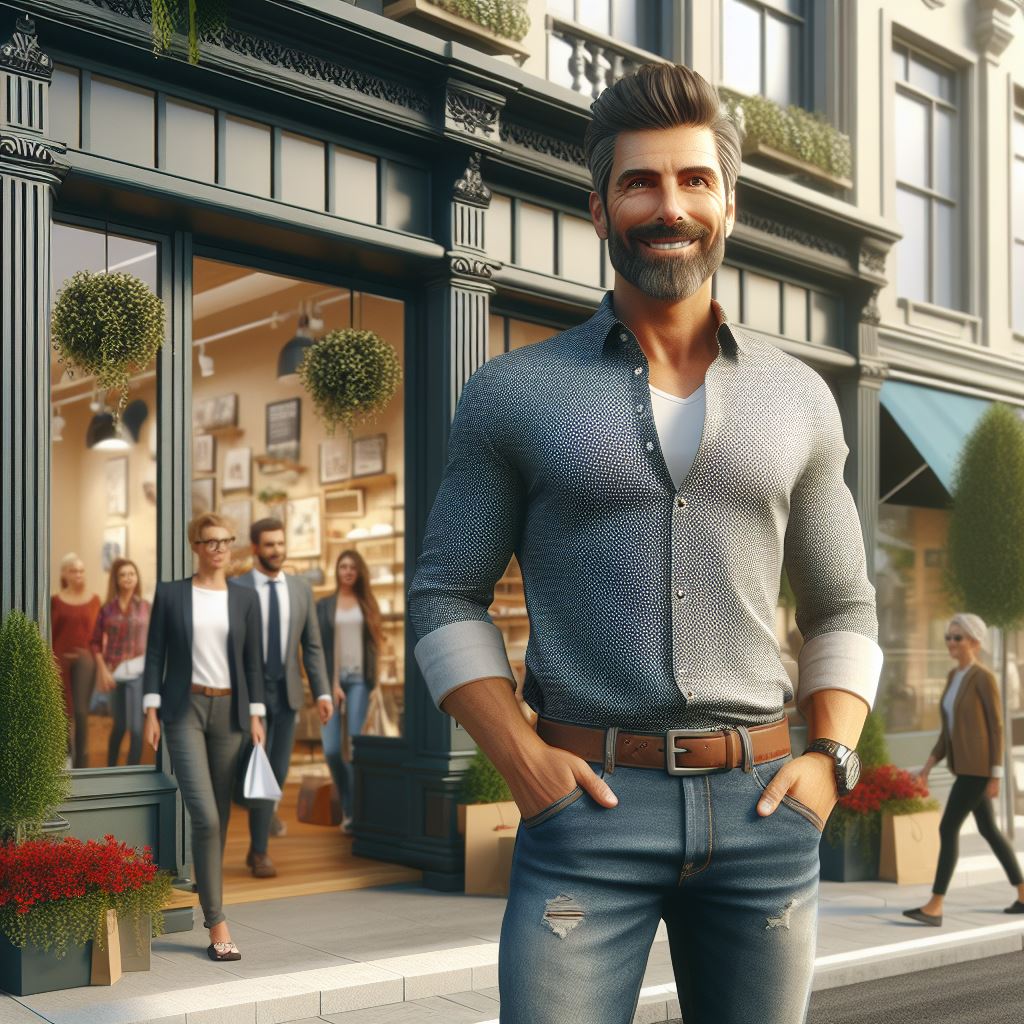Introduction
In the rapidly changing retail landscape, understanding and analyzing post-pandemic foot traffic trends is more important than ever.
Retail foot traffic refers to the number of people physically visiting stores or establishments, indicating consumer interest and engagement.
By examining the patterns and shifts in foot traffic, businesses can gain valuable insights into consumer behavior and adjust their strategies accordingly.
Analyzing post-pandemic foot traffic trends allows retailers to navigate the shifting consumer landscape effectively.
As COVID-19 has altered shopping habits, it is crucial to understand the changing preferences and needs of customers.
By monitoring foot traffic, retailers can identify which areas of their stores or establishments attract the most visitors, allowing them to optimize store layouts and product placements to boost sales.
Furthermore, foot traffic is directly linked to customer engagement and brand visibility.
When people visit physical stores, they have the opportunity to engage with products, interact with staff, and experience the brand firsthand.
High foot traffic indicates that customers are interested in exploring and purchasing products, resulting in increased sales and revenue.
Additionally, a bustling store not only attracts more foot traffic but also creates a positive impression on potential customers who walk by, increasing brand visibility.
In fact, analyzing post-pandemic foot traffic trends is essential for retailers to understand consumer behavior, adapt strategies, and thrive in the changing retail landscape.
By leveraging this information, businesses can optimize their operations and enhance customer engagement, leading to increased sales and long-term success.
Pre-Pandemic Foot Traffic Trends
Historical Data on Pre-Pandemic Foot Traffic
To comprehend the current state of retail foot traffic post-pandemic, it’s crucial to delve into the historical data of the pre-COVID-19 era.
Before the global health crisis, foot traffic in retail spaces was a robust indicator of economic vitality.
In bustling urban centers, shopping districts, and malls, the flow of consumers shaped the pulse of commerce.
Analyzing the statistics reveals a consistent upward trend in foot traffic.
Major retail hubs experienced year-over-year growth, reflecting a thriving consumer economy.
The pre-pandemic era was characterized by weekends teeming with shoppers, and holiday seasons transformed shopping centers into festive havens of activity.
Factors Influencing Foot Traffic Patterns Before COVID-19
Several factors played pivotal roles in shaping foot traffic patterns.
The accessibility of retail locations, urban planning, and the presence of anchor stores all contributed to drawing in crowds.
Seasonal trends, promotional events, and cultural festivities also influenced the ebb and flow of shoppers.
Additionally, the rise of experiential retail, where stores provided immersive and engaging experiences beyond mere transactions, attracted a diverse audience.
The pre-pandemic landscape was marked by the synergy between online and offline retail, with businesses leveraging technology to enhance the in-store experience.
The Impact of Foot Traffic on Retail Businesses’ Performance
The correlation between foot traffic and retail success was evident.
Businesses strategically located in high-traffic areas reaped the benefits of increased visibility and walk-in customers.
Foot traffic was not just a numerical metric but a crucial element in the vitality of brick-and-mortar stores.
Sales, brand awareness, and customer loyalty were directly influenced by foot traffic.
Retailers carefully analyzed peak hours and seasons to optimize staffing, inventory levels, and marketing strategies.
Understanding and harnessing foot traffic patterns became a cornerstone for sustainable retail growth.
Examples of Thriving Retail Businesses with High Foot Traffic Before the Pandemic
Notable examples of thriving retail businesses were abundant in the pre-pandemic landscape.
Iconic department stores, boutique shops, and flagship stores of global brands attracted crowds consistently.
From the grandeur of flagship Apple stores to the charm of local boutiques in bustling neighborhoods, success stories varied in scale but shared a common thread – strategic positioning and a keen understanding of consumer behavior.
In short, pre-pandemic foot traffic trends painted a vibrant picture of retail prosperity.
Understanding the historical context provides a valuable baseline for assessing the current state of retail foot traffic post-pandemic.
The lessons learned from the past can inform strategies to revitalize and reshape the retail landscape in the evolving market scenario.
Read: E-Commerce vs. Physical Stores: The US Battle
The Impact of the Pandemic on Retail Foot Traffic
Overview of the changes in foot traffic due to lockdowns and restrictions
The seismic shifts in consumer behavior during the pandemic have reshaped the landscape of retail foot traffic.
Lockdowns and restrictions forced a radical transformation in how consumers engage with brick-and-mortar stores.
With stay-at-home mandates and social distancing protocols, foot traffic plummeted across retail sectors, creating an unprecedented challenge for businesses to adapt.
Data on the decline in foot traffic during the pandemic
Statistical evidence underscores the sharp decline in foot traffic during the pandemic era.
High streets, once bustling with shoppers, transformed into eerie, quiet landscapes.
Data reveals staggering drops in footfall, emphasizing the profound impact of lockdowns on consumer mobility.
The closure of non-essential businesses and the fear of infection prompted a mass migration towards online shopping, exacerbating the decline in physical store visits.
The challenges faced by retail businesses with decreased foot traffic
The diminished foot traffic posed myriad challenges for retail businesses.
Reduced in-store sales, excess inventory, and the struggle to cover fixed costs became the new normal.
Retailers faced the daunting task of reinventing their strategies to stay afloat.
Innovative solutions such as curbside pickup, contactless payments, and enhanced online experiences emerged as lifelines for businesses grappling with the consequences of decreased foot traffic.
Examples of retail sectors hit hardest by reduced foot traffic
Certain retail sectors bore the brunt of decreased foot traffic more acutely.
Fashion retailers, reliant on the tactile experience of trying on garments, suffered as customers shied away from fitting rooms.
Specialty stores, particularly those offering non-essential items, experienced significant declines.
Additionally, businesses dependent on tourism, such as souvenir shops and travel agencies, faced unparalleled challenges with the evisceration of tourist footfall.
In a nutshell, the pandemic-induced alterations in consumer behavior have left an indelible mark on retail foot traffic.
Businesses that weathered the storm did so by embracing digital solutions, flexible strategies, and a profound understanding of the evolving needs and expectations of their customers.
The road to recovery requires a delicate balance between technological innovation and preserving the essence of the in-store shopping experience.
Read: Anchor Stores: The Changing Dynamics in Malls

Shifts in Consumer Behavior Post-Pandemic
Analysis of the changes in consumer behavior during the pandemic
The COVID-19 pandemic has reshaped consumer behavior, triggering a seismic shift in how people approach shopping.
The fear of infection coupled with lockdowns led to a significant change in consumer habits.
As a result, retailers are now grappling with the aftermath of these transformations.
Shift towards online shopping and e-commerce
One of the most profound changes witnessed post-pandemic is the accelerated shift towards online shopping and e-commerce.
Consumers, once hesitant to embrace virtual retail, now find the convenience and safety of online platforms irresistible.
The ease of browsing, ordering, and doorstep delivery has not only become a preference but, for many, a necessity.
Adoption of new shopping habits and safety concerns
Consumers have adopted new shopping habits shaped by safety concerns.
The emphasis on contactless transactions, curbside pickups, and digital payments has become the norm.
Shoppers are now more conscious of hygiene and social distancing, impacting their choice of retail destinations.
Brands that prioritize safety measures are likely to attract more foot traffic.
Implications for foot traffic in physical retail spaces
The surge in online shopping, coupled with the adoption of new safety-conscious habits, has led to a decline in foot traffic within physical retail spaces.
Consumers are now more selective in choosing when and where to visit brick-and-mortar stores.
Retailers must adapt by creating immersive in-store experiences, integrating technology, and ensuring a seamless omni-channel shopping journey to entice customers back into physical spaces.
Essentially, the post-pandemic era has witnessed a significant overhaul in consumer behavior.
The rapid shift towards online shopping, adoption of new safety-conscious habits, and the subsequent impact on foot traffic in physical retail spaces present both challenges and opportunities for businesses navigating this evolving landscape.
Adapting to these changes is imperative for retailers looking to thrive in the new era of consumer preferences.
Read: Small Storefronts: Big Impact in Urban Areas
Predictions for Post-Pandemic Foot Traffic
Expert Opinions on the Recovery of Foot Traffic in Retail Spaces
As we cautiously emerge from the shadows of the pandemic, experts in the retail industry are closely examining the potential trajectory of foot traffic in brick-and-mortar stores.
Many industry leaders express optimism, citing pent-up consumer demand and the resiliency of the retail sector.
Retail analysts anticipate a gradual but steady rebound, projecting a return to, and even surpassing, pre-pandemic foot traffic levels.
Factors Influencing the Pace of Foot Traffic Recovery
Several factors will play pivotal roles in determining the pace of foot traffic recovery.
Consumer confidence, economic stability, and vaccination rates are key variables.
Additionally, the adoption of new shopping behaviors developed during the pandemic, such as online shopping and curbside pickup, will impact how and when consumers choose to visit physical stores.
Expected Changes in Foot Traffic Patterns Compared to Pre-Pandemic Levels
The landscape of retail foot traffic is expected to undergo significant shifts.
Experts predict a hybrid approach, where consumers continue to embrace online shopping but also crave in-person experiences.
Retailers situated in suburban areas may witness a surge in foot traffic, as remote work reshapes urban and suburban dynamics.
Weekend shopping sprees might become more pronounced, as consumers seek leisurely outings rather than rushed midweek errands.
Opportunities for Retail Businesses to Adapt and Attract Foot Traffic
Adaptation will be the cornerstone for retail businesses looking to thrive post-pandemic.
The integration of technology, personalized shopping experiences, and innovative marketing strategies will be crucial.
Retailers can leverage data analytics to understand changing consumer behaviors, tailor their offerings, and create enticing in-store experiences.
Collaborations with local businesses and community engagement initiatives will further foster a sense of connection and draw customers back to physical stores.
Ultimately, the post-pandemic era offers a landscape of opportunities for retail businesses.
By staying attuned to expert insights, understanding the influencing factors, and adapting with agility, retailers can position themselves not just to recover, but to thrive in the evolving world of foot traffic.
Read: US Retail Real Estate: What Investors Should Know
Strategies for Analyzing and Utilizing Post-Pandemic Foot Traffic Data
The aftermath of the pandemic has reshaped consumer behavior and, consequently, retail foot traffic patterns.
In this section, we delve into the vital strategies for effectively analyzing and utilizing post-pandemic foot traffic data, offering insights that can guide businesses in adapting to the new normal.
Importance of Data Analysis in Understanding Foot Traffic Patterns
Understanding foot traffic patterns is crucial for retailers seeking to thrive in the post-pandemic landscape.
Data analysis unveils consumer preferences, peak hours, and dwell times, enabling businesses to optimize operations and enhance customer experiences.
In a world where every visitor represents a potential sale, decoding foot traffic data becomes a strategic imperative.
Tools and Methods for Collecting Foot Traffic Data
The arsenal of tools available for collecting foot traffic data has expanded.
From advanced video analytics to Wi-Fi tracking and Bluetooth beacons, retailers now have an array of options.
Combining these technologies with mobile apps and loyalty programs enhances data accuracy, providing a comprehensive view of customer movements within the store.
Key Metrics to Consider When Analyzing Foot Traffic Data
Effective analysis involves tracking key metrics such as conversion rates, heat maps, and customer journey mapping.
Conversion rates pinpoint the effectiveness of store layouts and product placements, while heat maps visualize high-traffic areas.
Customer journey mapping, on the other hand, unravels the sequence of touchpoints, shedding light on potential friction points in the shopping experience.
Examples of Successful Businesses Leveraging Foot Traffic Insights
Several forward-thinking businesses have embraced post-pandemic foot traffic insights to revamp their strategies.
Online-offline integrations, personalized promotions based on in-store behavior, and dynamic staffing adjustments are some of the success stories emerging from a data-driven approach.
Retail giants leveraging foot traffic data not only survive but thrive in the evolving marketplace.
Therefore, the post-pandemic era demands a data-centric approach to retail foot traffic.
Businesses that harness the power of data analysis, leverage innovative tools, focus on key metrics, and draw inspiration from successful examples are well-positioned to navigate and capitalize on the changing dynamics of consumer behavior in the post-pandemic world.
Conclusion
Throughout this post, we have explored the significance of analyzing retail foot traffic in the post-pandemic era.
With consumer behavior changing rapidly, it has become crucial for retailers to understand the trends and patterns in foot traffic to make informed business decisions.
In order to thrive in the new normal, retail businesses must adapt and optimize their strategies based on the analysis of foot traffic data.
By utilizing advanced analytics tools, retailers can identify opportunities, improve customer experiences, and boost sales.
As we move forward in the post-pandemic landscape, the future of retail foot traffic seems to be a blend of online and offline experiences.
While e-commerce has gained significant momentum, physical stores have their own unique advantages.
Retailers must find innovative ways to create seamless omnichannel experiences that cater to the evolving needs and preferences of consumers.
In the end, analyzing retail foot traffic post-pandemic is not just beneficial but necessary for the survival and growth of retail businesses.
By leveraging data-driven insights and adapting to changing consumer behaviors, retailers can stay competitive and thrive in the evolving retail landscape.




